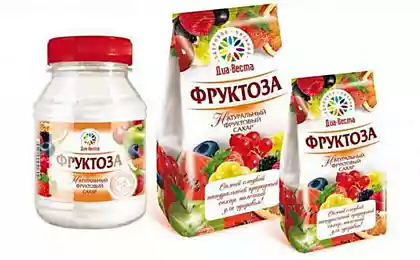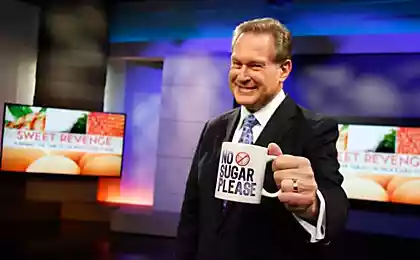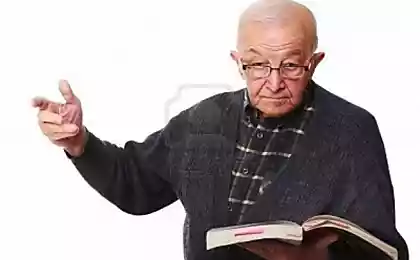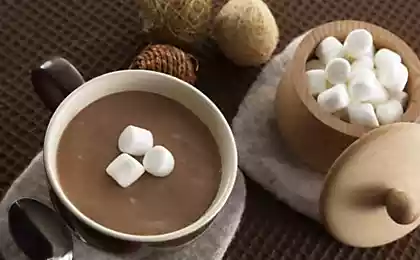730
Sugar and alcohol: unfriendly Gemini
Sugar and alcohol have surprisingly much in common. In nature we received them from a single product – the fruits (ripe and fermented). But the similarity does not end there. It turns out that sugar and alcohol cause the same problems in the liver, provoke insulin resistance.
And besides, sugar and alcohol are substances that cause drug dependence. Dependence on alcohol and sweets is associated with one and the same part of the brain. Sugar and alcohol are equally lead to depression, burnout and reduce the willpower. Read more about it in this article.
Fifty two million eight hundred twenty four thousand eight hundred eleven
1. The common evolutionary background of the action of fructose and alcohol.
A common source of alcohol and sugar – fruits. Our sweet tooth (fructose) and alcohol were formed. Like fructose and alcohol are related to the same type of products to the fruit. As you know, our ancestors were primates and lived in trees, so it was important to them for survival.
Mutations that gave us "special treatment" to fructose and alcohol helped our ancestors to survive in cold. The researchers showed that their findings support the hypothesis of the "Thrifty gene" linking the tendency of modern humanity to obesity fixed in the genome since ancient times the necessity of creating fat deposits on a hungry period.
Therefore, as fructose and alcohol have many similar situations: they increase the appetite, cause dependence, violate the metabolism and exacerbate insulin resistance. But for our ancestors it was good, because the fruits have ripened once a year and it was important to gain a lot of fat to survive the winter. About it you can read this article: the Theory of hibernation. Let's find out more about the evolutionary craving for alcohol and fructose.
Evolutionary craving for alcohol.
The earliest form of the enzyme to digest alcohol (alcoholdehydrogenase) АДГ4 that was in primates 50 million years ago, could turn into aldehyde only a small amount of alcohol, and, moreover, very slow. But when it came to the common ancestor of humans, gorillas and chimpanzees, which lived 10 million years, the enzyme has made an evolutionary leap and he started to process alcohol up to 40 times more efficient. For the first time the "drunken monkey hypothesis" proposed Robert Dudley, University of California, Berkeley (USA) about 15 years ago.
The gist of it is that our ancestors-the primates could get an evolutionary advantage by learning to consume food fallen from the tree the fruits of which have already begun the process of fermentation and production of ethanol. After all, ethanol is not only a "fun soul", but also stimulates the appetite and prevents the growth of harmful bacteria; in addition, the smell of alcohol was easier animals to find ripe fruits.
Dudley's hypothesis was confirmed in 2014, when scientists from the group of M. Carrigan from the College of Santa Fe (USA) using the methods paleogenetic analyzed the "history" of the enzyme alcohol dehydrogenase 4, which converts ethyl alcohol to acetaldehyde.
It turned out that about 10 million years ago in the common ancestor of humans and apes (chimpanzees and gorillas) the mutation occurred in a gene, which encodes this enzyme, resulting in the rate of metabolism of ethanol has increased by 40 times! This change presumably coincided with the moment of transition of our ancestor to a terrestrial lifestyle. Because fallen fruit contain a lot of ethanol compared to those that hang on the tree, and thanks to this active alcoholdehydrogenase "ground" monkeys got the opportunity to eat fermented fruit without the risk of poisoning.
Seventy eight million thirty six thousand five hundred ninety five
The authors relate such biochemical changes that happened then a big cold, and primates had to diversify food resources, at the same time descending from the trees to the ground. In common with our chimpanzee ancestors is now not only ate fresh fruits from the trees, but also fallen, subjected to bacterial fermentation.
Let him alcohol in such fruits were few, he still had to do something. The monkey, which had no need "activating" mutations in the gene for alcohol dehydrogenase 4, quickly and permanently drunk (because alcohol is not processed and remained in the blood), and in this state it is difficult, for example, to defend the territory or to continue the search for food.
In General, priority was given to those individuals who have АДГ4 work more efficiently, so they might have fallen and the fruit is, and to feel normal. On the other hand, this partly explains why some monkeys did not come down; they just prefer to stay where you can find even a little, but regular, fresh, not "drunken" fruit.
At the same time it is possible to understand why our brain was predisposed to the development of alcohol dependence. The basis of addiction lies the feeling of pleasure, and pleasure was alcohol-related in those days, when he often accompanied the food. But in ancient times, the primates not that bathed in fermented fruit, and alcoholism, they are not threatened. And only later, when man learned to obtain alcohol in any quantity, it became clear what the result of such evolutionary trick.
Evolutionary craving for fructose.
The cold forced our ancestors not only have a stale fermented fruit, but also a more efficient use fructose. This happened due to a mutation in a gene, which encodes the splitting of uric acid, the enzyme uricase. It is assumed that during the Miocene (about 17 million years ago) the ancestors of primates in the gene, which encodes uricase occurred mutations, leading to its inactivation.
As a result, in the blood of humans and great apes uric acid levels three to ten times higher than that of other mammals. Uric acid is a byproduct of the decomposition of fructose in the liver, and its accumulation in the body inhibits the action of insulin and facilitates the efficient conversion of fructose to fat, that increases the energy output from each eaten fruit and therefore increases the chances of survival.
It is important that the fructose in our body is metabolized not like glucose. While the latter usually are converted to energy or stored as glycogen (to nourish muscle cells), the first split in the liver, and then most often transformered into fat. Studies have shown that consumption of fructose increases the rate of formation people fat.
The consumption of the same amount of calories in the form of glucose this reaction causes. Fructose not only turns into fat — it blocks the mechanisms that hold the body from turning into a machine for the production of fat (making it clear when absorbed a sufficient amount of energy). According to numerous studies, fructose does not stimulate the production of two critical hormones involved in long-term regulation of energy balance, insulin and leptin.
2. A double whammy for the liver: fructose and alcohol.
The liver is one of the primary points of application as alcohol (alcoholic fatty liver disease) and fructose (non-alcoholic fatty liver disease). Fatty liver (fatty liver disease) is the Rubicon, which overeating and drinking turns into a real disease. The accumulation of fat in the liver called non-alcoholic fatty liver disease (NAFLD).
Model of fatty liver you have long known from the times of Ancient Egypt. Foie gras (foie Gras) is called and is a gourmet dish which is prepared from goose or duck liver. The practice of force-feeding geese dates back to the era of Ancient Egypt, as evidenced by wall paintings discovered in the ancient necropolis of Saqqara (age approx. 4,500 years).
The Egyptians artificially fattened several species of waterfowl, including geese, crushed grain, pre-fried and dipped. This feeding practice continued in Ancient Greece and in the Roman era. Obtained by fattening the liver, called in Latin Jecur ficatum, which literally meant "figgy liver".
The descendants have kept the product name the word ficatum, or Fig, to the VIII century which was transformed into the word figido, and to the XII century in fedie, feie, and finally turned into a "foie" (foie) in the romance languages. The liver birds is stretched due to a carbohydrate-rich diet and the condition will increase in size more than 10 times, in contrast to normal size (this disease is called fatty degeneration of the liver). Unfortunately, something similar could happen with the liver of each of us.
Twenty three million one hundred sixty one thousand eight hundred nineteen
After eating fructose, 100 percent of the metabolic burden falls on the liver – only one liver is able to recycle fructose. For comparison, only 20% of glucose is metabolized in the liver and the remaining 80% is then used to power the body's cells. In addition, the fructose turns into fat much faster than any other sugar. In relation to the biochemical metabolism of fructose is similar to alcohol metabolism. Accordingly, the effect of damaging the liver of the action of fructose similar to that from alcohol.
Remember that fatty liver can often completely asymptomatic and even doesn't show up on conventional tests. She, like hypertension, is a silent killer. Of the reasons leading to fatty liver damage from eating to toxic injury by alcohol. Not much difference in the course of the disease there. Fatty liver causes the development of systemic inflammation which is the cause of many boleznei: from obesity to cardiovascular disease and cancer.
Ninety eight million two hundred eighty three thousand one hundred eighty three
3. Social harm: the abuse of alcohol and fructose.
In 2003 he published a book psychologist Thomas BABOR called "Alcohol: an unusual product." In this book the author describes the four most negative traits of alcohol, according to most public health agencies: the inevitability of the spread in society, toxicity, addiction, and overall negative impact on society as a whole.
Suddenly it turns out that excessive consumption of sugar carries the same negative consequences. American biologists propose to equate sugar and sweeteners based on a mixture of fructose and glucose to alcohol and tobacco. Scientists believe that the sweet abuse causes most chronic diseases and syndromes associated with alcoholism. Robert Lustig, Laura Schmidt and Claire Brindis of the University of California in San Francisco laid out their strategy for managing turnover of sugar and other sweet substances in the journal Nature.
Eight million two hundred sixty two thousand six hundred ninety one
The authors argue that the constant overeating of the sweet causes the same negative effects that the abuse of alcohol. According to biologists, sugar and alcohol was not available in such quantities, what we can get now. Because of this, the person does not have defense mechanisms that protect it from the negative consequences of their use.
According to scientists, many scientific works have pointed out the negative consequences of abuse of sugar. Among them, Lustig and his colleagues called diabetes, hypertension, reduced insulin sensitivity and fatty liver. In addition, the sugar acts in a similar way to the reward centers in the brain, stimulating the human eating a new portion of sweet food.
In addition to this, sugar and its analogues partially inhibit the production of hormones of satiety – ghrelin and leptin. The lack of these signal molecules are believed to have caused systematic overeating. According to biologists, overeating has become a serious health problem for most countries in the world.
So, the United States government spends up to 75% of the resources of the health system in the fight against metabolic syndrome and other consequences of overeating sweet. Lustig, Schmidt and Brindis propose to introduce the same excise taxes and restrictions that applied to limit turnover of tobacco and alcohol. According to them, first and foremost, you should cross out the sugar and glucose from the list of safe food additives that prevent food manufacturers add them to their products in an unlimited quantity.
A special place in this system is a special tax that will be imposed on all products containing sugar additives. One of them will get fizzy drinks, nectars, chocolate milk and sweetened vegetable flakes. According to scientists, the prices of such goods must be doubled in order to significantly reduce the consumption of sugar.
As more drastic measures, scientists propose to introduce a restriction or ban on the sale of soft drinks to children under 17 and to limit the number of fast-food restaurants in areas with low average incomes. Furthermore, the governments of industrialized States can establish the subsidy program for the sale or purchase of products with low sugar content.
"A sufficient degree of hype surrounding this issue can lead to tectonic shifts in the health care system. A similar problem – the ban on Smoking in public places and airbags in cars, it was controversial and was accepted by society and politicians. It is time to turn our attention to sugar," conclude the authors.
Passive Smoking and the consequences of drunk driving are significant arguments for legislative control of consumption of tobacco and alcohol. However, long-term effects, such as the level of health and health care costs, put the sugar overconsumption in the same category as Smoking and drinking.
For example, in the United States annually allocates $ 65 million to fight diseases associated with metabolic syndrome, and compensation for the resulting loss of productivity; $ 150 million annually absorbs medical care of patients with metabolic syndrome. In the US, 25% of new recruits (i.e., every fourth!) willing to join the ranks of the military, rejected by the Commission for the cause of obesity: medical officers the United States has declared obesity a "threat to national security."
4. Alcohol and sugar cause persistent dependence.
About alcoholism and dependence on booze you think you know everything. Much less is known about sugar. Below I describe their relationship. I emphasise that any drugs lead to permanent changes in the brain (the brain of the addict): this is equally typical for sugar and for alcohol.
Scientifically established that excessive sweet can be considered an indirect indication that in the future people may face the problem of alcoholism, because people who abuse alcohol, more than usual like sweets. Incentive system of the brain (the dopamine system), responding to intense sweet taste is related to the structures of the alcohol man.
Enough has long been known that animals, specifically bred to prefer alcohol, also consume significant quantities of sweetened water than do not selectively bred animals. More recently it became known that animals, specially bred with a preference to the artificial sweetener — saccharin, also consume more alcohol.
Although these experiments on humans have large variations, some studies actually show that alcoholics, or even non-alcoholics, but with a family history of a chronic alcoholism, have a preference for intensely sweet foods.
In addition to the "activation" of taste sensations to the brain or tasting circuits, sweetened water also activated key elements of what neuroscientists consider, as part of a reward system in the brain.
This system includes the ventral striatum, the amygdala, and parts of the orbitofrontal cortex — the inferior frontal lobe of the surface just above the eyes — to answer used to encourage stimuli. The researchers found that the response to intense sweet taste in the left orbitofrontal area significantly correlated with the structure of alcohol consumption of the subject.
Specific, that the trend was such that those who consumed more alcohol, had a stronger response in the left orbitofrontal region on a heavily sweetened water. Subjective desire of respondents to the sweetened water also contributed to this relationship, so that the immediate reaction of the brain, as well as the preference for sweetened water together correlated with the model of alcohol consumption".
In a more practical sense, these data are strong evidence that the reaction of the brain to intensely sweet taste may be used in future studies to test the differences in the circuits of promotion on the basis of risk of development of chronic alcoholism.
5. Sweets and alcohol will affect insulin metabolism and glucose levels.
Paradoxically, a sweet tooth, suffer from fluctuations in the level of blood glucose (sugar swing) and much more likely to face moderate hypoglycemia than healthy people. This is due to excessive production of insulin which inhibits the breakdown of glycogen (locked calories). Interestingly, alcohol has a similar mechanism.
Alcohol can reduce blood sugar, and therefore cause hypoglycaemia, which is potentially life-threatening. The fact that alcohol is, on the one hand, enhances the action of insulin and glucosaminidase tablets, and on the other — inhibits the formation of glucose in the liver. This can be one of the reasons for the greater incidence of hypoglycemia in people drinking. Alcohol causes hypoglycemia by breaking metabolic pathway of gluconeogenesis through changes of the cytosolic ratio of H2 OVER/OVER.
The fact that the metabolism of ethanol in the liver is catalyzed by alcohol dehydrogenase, cofactor of this enzyme is NAD (nicotinamide adenine dinucleotide) is a substance essential for gluconeogenesis and the consumption of alcohol leads to a rapid expenditure OVER and sharp inhibition of gluconeogenesis in the liver.
In addition to intracellular processes, ethanol also inhibits the uptake of lactate by the liver, Alaniya and glycerin, all of them usually promote gluconeogenic hepatic glucose production. Ethanol also dramatically reduces the number of alanine in the blood by inhibiting its inflow from the muscles.
6. Insulin resistance: fructose and alcohol.
In the loop about fructose I detail dismantled the mechanisms that lead to insulin resistance. We note that even if you don't eat a lot of fructose, even the problems with excess high-glycemic carbohydrates can result in the synthesis of fructose inside you.
The fact that a chronic increase of glucose level in the blood, resulting from eating foods with high glycemic index causes a so-called paleology way of glucose metabolism, resulting in her transformation into fructose. So you can get excess fructose not even eating her food.
When excess glucose it is this incremental endogenous fructose that turns to glucose in the liver, is the cause of systematic violations of metabolism in the body, leading to obesity, insulin resistance and other symptoms of metabolic syndrome — a precursor of diabetes.
And now about alcohol and insulin resistance (for example, diabetes of the second type). Alcohol abuse is also one of the risk factors of diabetes. Diabetogenic effects of alcohol include direct toxic effects on the cells of the pancreas, inhibiting insulin secretion and increasing resistance to it, the violation of carbohydrate metabolism, obesity caused by the intake of excessive calories and the liver.
In experimental studies it was shown that in rats subjected to chronic alcohol intoxication, it was observed a decrease in the volume of the pancreas and atrophy of the beta cells. The metabolites of ethanol 2,3-butanediol and 1,2-PROPANEDIOL to inhibit basal and insulin-stimulated metabolism in adipocytes.
Many studies have demonstrated a positive correlation between alcohol abuse and the risk of developing diabetes type II. Thus, in one prospective study it was shown that the use of alcohol in a dose of 25 g per day significantly increases the risk of diabetes type II in comparison with the use of small doses of alcohol.
According to the results of another study, the risk of developing diabetes of type II diabetes in subjects consuming > 36 g of alcohol per day, 50% higher compared to those who consume 1.7 g of alcohol per day, and a number of other studies.
7. Mutiny style: fructose and alcohol.
Fructose and alcohol cause overeating and it is caused genetically. Because the fruits ripen in a short period of time and need to forcibly eat an incredible amount to the accumulated fat enough for the whole winter. So as soon as we start eating sweets or drinking we can't stop.
The special harm of fructose and alcohol cause not in regular use, in small doses, and at one-time use of large doses (mutiny style). Also drawn attention to the relationship of the consumption type and character of liver damage. A very negative assessment on the effect on the liver have received this type of use as "matinee" (too much too fast), i.e., 5 or more doses for men in 2 hours.
And in one of the papers established that the use of large doses of alcoholic beverages in a short period of time (called the intoxication-oriented pattern of alcohol consumption) increases the risk of developing diabetes type II in women (the risk is greater than the same dose of alcohol consumed regularly in small portions.
Fructose and alcohol are significantly impaired willpower and camcontrol. So, alcohol promotes overeating, including drinking huge quantities of sweet. After drinking alcohol people want to eat sweets, pizza, burgers, chips, fried potatoes and other sweet, salty or fatty foods that are extremely harmful to the human body.
Sugar and alcohol awaken zhor and significantly reduces our self-control. In fact, even realizing the damage comes from the aforementioned foods, we can't resist the temptation after consuming excessive amounts of alcoholic beverages.
If you have a more stable level of blood sugar then you are better off resisting the temptation and you have stronger willpower. When the low level of glucose you more susceptible not only for dessert but also for a temptation (TV, casino, computer games). Low blood sugar predicted a different kind of failure of self-control: someone give up in hard tasks, and someone pushed down on others.
Gailliot, now a Professor at Zirve University in Turkey, found that people with low blood sugar are more likely to rely on stereotypes and less inclined to donate money to charity or to help strangers. I already wrote about the fact that alcohol lowers blood glucose and have a sweet tooth, too, is typical of mild hypoglycemia (because of the constantly elevated levels of insulin).
8. Dependence easy to switch.
As sweets and alcohol have common centers in the brain, the person, struggling with something one can easily jump to another addiction. Abstinence from alcohol leads to increased cravings for sweets. And vice versa. To stop eating sweets and all the carbohydrates leads to an increase in desire to take alcoholic drinks.
That is why it is important to change yourself properly, adequate individual program and not hurriedly "willpower". Development of individual programs possible in the format of the consultation, when we focusareas on coercion, but on the restoration of the sensitivity of dopamine receptors. And now about switching the sugar alcohol.
The people seen in the addiction to alcohol, after adding to their diet of sweets has decreased its interest in strong drink. And many say that reducing the amount of alcohol consumption usually leads to increased cravings for sweets. It is actually a very common situation, when one obsession is replaced with another.
For example, people who have undergone treatment of gambling addiction, gambling cravings lose, but begin to "do business", taking the uncontrolled Bank loans, and forcing themselves in more difficult financial situation. A curious observation was conducted in Australia. In this country there are two months a year – February and July – when people are encouraged to refrain from alcohol, and the money saved spent on charity.
Many Australians do. Alcohol in February and July really sell less than usual. But sweets and fly from the shelves. Themselves refusing from alcohol say that not drinking alcohol at all, they eat a lot of sweets.
There is and inverse relationship. People leading a healthy lifestyle and eating properly, that is, eliminating from your diet sugar, cereals, bakery products, minimizirovanie the use of sweet fruits and starchy vegetables, begin to feel the desire to drink. Though for them, such desires were not found.
9. Alcohol and sweets are high in calories.
Moreover, the alcohol overtakes the sweetness very confident. So, 100 grams of vodka about 240 calori, and a bottle almost daily skinny person. The caloric value of this ethanol is very high: about 7 kalorii at wits grams of pure alcohol. in the protein or carbohydrate foods on average about 4 kcalorie per gram above are only pure fat is 9 kcalorie per gram of fat.
Sixty five million three hundred eighty three thousand seven hundred sixty three
10. Depression a craving for alcohol and sugar increases
Your child drawn to sugar? This can be alarming, according to the American researchers. They believe that children's love of very sweet products, is one of the symptoms of depression. Researchers from the Monell Chemical Senses center in Philadelphia found that children on sugar pulls from the sweet life.
First, the biggest fans of sweets is likely to suffer from depression. And secondly, as it turned out, 49% of the children in the family had relatives suffering from alcoholism. From the first glance such findings seem a bit strange. In fact, what kid doesn't like sweets?
"Yes, we know, of course, that sweet products are well accepted by children and babies after chocolate or a donut improves mood, explains study author Dr. Julie Mennella. But we're talking about a group of children, which is particularly keen to eat very sweet foods, which is associated with hidden biological reasons".
Exercise for correction of degenerative posture
Metabolism nothing to do with it
It turns out that alcohol and sweets activates almost the same brain region. Well as for depressed children, here is the explanation even more simple — they just want to feel better, so lean on sweet.
Eighty six million five hundred eighty five thousand seven hundred ninety
Conclusion.
Be careful with sweet, it is not as harmless as it seems at first glance. The best way to fight is to study the enemy in the face. Stay healthy and happy! published
Author: Andrey Blueskin
Source: www.beloveshkin.com/2016/08/sakhar-i-alkogol-nedruzhelyubnye-bliznecy.html
And besides, sugar and alcohol are substances that cause drug dependence. Dependence on alcohol and sweets is associated with one and the same part of the brain. Sugar and alcohol are equally lead to depression, burnout and reduce the willpower. Read more about it in this article.
Fifty two million eight hundred twenty four thousand eight hundred eleven
1. The common evolutionary background of the action of fructose and alcohol.
A common source of alcohol and sugar – fruits. Our sweet tooth (fructose) and alcohol were formed. Like fructose and alcohol are related to the same type of products to the fruit. As you know, our ancestors were primates and lived in trees, so it was important to them for survival.
Mutations that gave us "special treatment" to fructose and alcohol helped our ancestors to survive in cold. The researchers showed that their findings support the hypothesis of the "Thrifty gene" linking the tendency of modern humanity to obesity fixed in the genome since ancient times the necessity of creating fat deposits on a hungry period.
Therefore, as fructose and alcohol have many similar situations: they increase the appetite, cause dependence, violate the metabolism and exacerbate insulin resistance. But for our ancestors it was good, because the fruits have ripened once a year and it was important to gain a lot of fat to survive the winter. About it you can read this article: the Theory of hibernation. Let's find out more about the evolutionary craving for alcohol and fructose.
Evolutionary craving for alcohol.
The earliest form of the enzyme to digest alcohol (alcoholdehydrogenase) АДГ4 that was in primates 50 million years ago, could turn into aldehyde only a small amount of alcohol, and, moreover, very slow. But when it came to the common ancestor of humans, gorillas and chimpanzees, which lived 10 million years, the enzyme has made an evolutionary leap and he started to process alcohol up to 40 times more efficient. For the first time the "drunken monkey hypothesis" proposed Robert Dudley, University of California, Berkeley (USA) about 15 years ago.
The gist of it is that our ancestors-the primates could get an evolutionary advantage by learning to consume food fallen from the tree the fruits of which have already begun the process of fermentation and production of ethanol. After all, ethanol is not only a "fun soul", but also stimulates the appetite and prevents the growth of harmful bacteria; in addition, the smell of alcohol was easier animals to find ripe fruits.
Dudley's hypothesis was confirmed in 2014, when scientists from the group of M. Carrigan from the College of Santa Fe (USA) using the methods paleogenetic analyzed the "history" of the enzyme alcohol dehydrogenase 4, which converts ethyl alcohol to acetaldehyde.
It turned out that about 10 million years ago in the common ancestor of humans and apes (chimpanzees and gorillas) the mutation occurred in a gene, which encodes this enzyme, resulting in the rate of metabolism of ethanol has increased by 40 times! This change presumably coincided with the moment of transition of our ancestor to a terrestrial lifestyle. Because fallen fruit contain a lot of ethanol compared to those that hang on the tree, and thanks to this active alcoholdehydrogenase "ground" monkeys got the opportunity to eat fermented fruit without the risk of poisoning.
Seventy eight million thirty six thousand five hundred ninety five
The authors relate such biochemical changes that happened then a big cold, and primates had to diversify food resources, at the same time descending from the trees to the ground. In common with our chimpanzee ancestors is now not only ate fresh fruits from the trees, but also fallen, subjected to bacterial fermentation.
Let him alcohol in such fruits were few, he still had to do something. The monkey, which had no need "activating" mutations in the gene for alcohol dehydrogenase 4, quickly and permanently drunk (because alcohol is not processed and remained in the blood), and in this state it is difficult, for example, to defend the territory or to continue the search for food.
In General, priority was given to those individuals who have АДГ4 work more efficiently, so they might have fallen and the fruit is, and to feel normal. On the other hand, this partly explains why some monkeys did not come down; they just prefer to stay where you can find even a little, but regular, fresh, not "drunken" fruit.
At the same time it is possible to understand why our brain was predisposed to the development of alcohol dependence. The basis of addiction lies the feeling of pleasure, and pleasure was alcohol-related in those days, when he often accompanied the food. But in ancient times, the primates not that bathed in fermented fruit, and alcoholism, they are not threatened. And only later, when man learned to obtain alcohol in any quantity, it became clear what the result of such evolutionary trick.
Evolutionary craving for fructose.
The cold forced our ancestors not only have a stale fermented fruit, but also a more efficient use fructose. This happened due to a mutation in a gene, which encodes the splitting of uric acid, the enzyme uricase. It is assumed that during the Miocene (about 17 million years ago) the ancestors of primates in the gene, which encodes uricase occurred mutations, leading to its inactivation.
As a result, in the blood of humans and great apes uric acid levels three to ten times higher than that of other mammals. Uric acid is a byproduct of the decomposition of fructose in the liver, and its accumulation in the body inhibits the action of insulin and facilitates the efficient conversion of fructose to fat, that increases the energy output from each eaten fruit and therefore increases the chances of survival.
It is important that the fructose in our body is metabolized not like glucose. While the latter usually are converted to energy or stored as glycogen (to nourish muscle cells), the first split in the liver, and then most often transformered into fat. Studies have shown that consumption of fructose increases the rate of formation people fat.
The consumption of the same amount of calories in the form of glucose this reaction causes. Fructose not only turns into fat — it blocks the mechanisms that hold the body from turning into a machine for the production of fat (making it clear when absorbed a sufficient amount of energy). According to numerous studies, fructose does not stimulate the production of two critical hormones involved in long-term regulation of energy balance, insulin and leptin.
2. A double whammy for the liver: fructose and alcohol.
The liver is one of the primary points of application as alcohol (alcoholic fatty liver disease) and fructose (non-alcoholic fatty liver disease). Fatty liver (fatty liver disease) is the Rubicon, which overeating and drinking turns into a real disease. The accumulation of fat in the liver called non-alcoholic fatty liver disease (NAFLD).
Model of fatty liver you have long known from the times of Ancient Egypt. Foie gras (foie Gras) is called and is a gourmet dish which is prepared from goose or duck liver. The practice of force-feeding geese dates back to the era of Ancient Egypt, as evidenced by wall paintings discovered in the ancient necropolis of Saqqara (age approx. 4,500 years).
The Egyptians artificially fattened several species of waterfowl, including geese, crushed grain, pre-fried and dipped. This feeding practice continued in Ancient Greece and in the Roman era. Obtained by fattening the liver, called in Latin Jecur ficatum, which literally meant "figgy liver".
The descendants have kept the product name the word ficatum, or Fig, to the VIII century which was transformed into the word figido, and to the XII century in fedie, feie, and finally turned into a "foie" (foie) in the romance languages. The liver birds is stretched due to a carbohydrate-rich diet and the condition will increase in size more than 10 times, in contrast to normal size (this disease is called fatty degeneration of the liver). Unfortunately, something similar could happen with the liver of each of us.
Twenty three million one hundred sixty one thousand eight hundred nineteen
After eating fructose, 100 percent of the metabolic burden falls on the liver – only one liver is able to recycle fructose. For comparison, only 20% of glucose is metabolized in the liver and the remaining 80% is then used to power the body's cells. In addition, the fructose turns into fat much faster than any other sugar. In relation to the biochemical metabolism of fructose is similar to alcohol metabolism. Accordingly, the effect of damaging the liver of the action of fructose similar to that from alcohol.
Remember that fatty liver can often completely asymptomatic and even doesn't show up on conventional tests. She, like hypertension, is a silent killer. Of the reasons leading to fatty liver damage from eating to toxic injury by alcohol. Not much difference in the course of the disease there. Fatty liver causes the development of systemic inflammation which is the cause of many boleznei: from obesity to cardiovascular disease and cancer.
Ninety eight million two hundred eighty three thousand one hundred eighty three
3. Social harm: the abuse of alcohol and fructose.
In 2003 he published a book psychologist Thomas BABOR called "Alcohol: an unusual product." In this book the author describes the four most negative traits of alcohol, according to most public health agencies: the inevitability of the spread in society, toxicity, addiction, and overall negative impact on society as a whole.
Suddenly it turns out that excessive consumption of sugar carries the same negative consequences. American biologists propose to equate sugar and sweeteners based on a mixture of fructose and glucose to alcohol and tobacco. Scientists believe that the sweet abuse causes most chronic diseases and syndromes associated with alcoholism. Robert Lustig, Laura Schmidt and Claire Brindis of the University of California in San Francisco laid out their strategy for managing turnover of sugar and other sweet substances in the journal Nature.
Eight million two hundred sixty two thousand six hundred ninety one
The authors argue that the constant overeating of the sweet causes the same negative effects that the abuse of alcohol. According to biologists, sugar and alcohol was not available in such quantities, what we can get now. Because of this, the person does not have defense mechanisms that protect it from the negative consequences of their use.
According to scientists, many scientific works have pointed out the negative consequences of abuse of sugar. Among them, Lustig and his colleagues called diabetes, hypertension, reduced insulin sensitivity and fatty liver. In addition, the sugar acts in a similar way to the reward centers in the brain, stimulating the human eating a new portion of sweet food.
In addition to this, sugar and its analogues partially inhibit the production of hormones of satiety – ghrelin and leptin. The lack of these signal molecules are believed to have caused systematic overeating. According to biologists, overeating has become a serious health problem for most countries in the world.
So, the United States government spends up to 75% of the resources of the health system in the fight against metabolic syndrome and other consequences of overeating sweet. Lustig, Schmidt and Brindis propose to introduce the same excise taxes and restrictions that applied to limit turnover of tobacco and alcohol. According to them, first and foremost, you should cross out the sugar and glucose from the list of safe food additives that prevent food manufacturers add them to their products in an unlimited quantity.
A special place in this system is a special tax that will be imposed on all products containing sugar additives. One of them will get fizzy drinks, nectars, chocolate milk and sweetened vegetable flakes. According to scientists, the prices of such goods must be doubled in order to significantly reduce the consumption of sugar.
As more drastic measures, scientists propose to introduce a restriction or ban on the sale of soft drinks to children under 17 and to limit the number of fast-food restaurants in areas with low average incomes. Furthermore, the governments of industrialized States can establish the subsidy program for the sale or purchase of products with low sugar content.
"A sufficient degree of hype surrounding this issue can lead to tectonic shifts in the health care system. A similar problem – the ban on Smoking in public places and airbags in cars, it was controversial and was accepted by society and politicians. It is time to turn our attention to sugar," conclude the authors.
Passive Smoking and the consequences of drunk driving are significant arguments for legislative control of consumption of tobacco and alcohol. However, long-term effects, such as the level of health and health care costs, put the sugar overconsumption in the same category as Smoking and drinking.
For example, in the United States annually allocates $ 65 million to fight diseases associated with metabolic syndrome, and compensation for the resulting loss of productivity; $ 150 million annually absorbs medical care of patients with metabolic syndrome. In the US, 25% of new recruits (i.e., every fourth!) willing to join the ranks of the military, rejected by the Commission for the cause of obesity: medical officers the United States has declared obesity a "threat to national security."
4. Alcohol and sugar cause persistent dependence.
About alcoholism and dependence on booze you think you know everything. Much less is known about sugar. Below I describe their relationship. I emphasise that any drugs lead to permanent changes in the brain (the brain of the addict): this is equally typical for sugar and for alcohol.
Scientifically established that excessive sweet can be considered an indirect indication that in the future people may face the problem of alcoholism, because people who abuse alcohol, more than usual like sweets. Incentive system of the brain (the dopamine system), responding to intense sweet taste is related to the structures of the alcohol man.
Enough has long been known that animals, specifically bred to prefer alcohol, also consume significant quantities of sweetened water than do not selectively bred animals. More recently it became known that animals, specially bred with a preference to the artificial sweetener — saccharin, also consume more alcohol.
Although these experiments on humans have large variations, some studies actually show that alcoholics, or even non-alcoholics, but with a family history of a chronic alcoholism, have a preference for intensely sweet foods.
In addition to the "activation" of taste sensations to the brain or tasting circuits, sweetened water also activated key elements of what neuroscientists consider, as part of a reward system in the brain.
This system includes the ventral striatum, the amygdala, and parts of the orbitofrontal cortex — the inferior frontal lobe of the surface just above the eyes — to answer used to encourage stimuli. The researchers found that the response to intense sweet taste in the left orbitofrontal area significantly correlated with the structure of alcohol consumption of the subject.
Specific, that the trend was such that those who consumed more alcohol, had a stronger response in the left orbitofrontal region on a heavily sweetened water. Subjective desire of respondents to the sweetened water also contributed to this relationship, so that the immediate reaction of the brain, as well as the preference for sweetened water together correlated with the model of alcohol consumption".
In a more practical sense, these data are strong evidence that the reaction of the brain to intensely sweet taste may be used in future studies to test the differences in the circuits of promotion on the basis of risk of development of chronic alcoholism.
5. Sweets and alcohol will affect insulin metabolism and glucose levels.
Paradoxically, a sweet tooth, suffer from fluctuations in the level of blood glucose (sugar swing) and much more likely to face moderate hypoglycemia than healthy people. This is due to excessive production of insulin which inhibits the breakdown of glycogen (locked calories). Interestingly, alcohol has a similar mechanism.
Alcohol can reduce blood sugar, and therefore cause hypoglycaemia, which is potentially life-threatening. The fact that alcohol is, on the one hand, enhances the action of insulin and glucosaminidase tablets, and on the other — inhibits the formation of glucose in the liver. This can be one of the reasons for the greater incidence of hypoglycemia in people drinking. Alcohol causes hypoglycemia by breaking metabolic pathway of gluconeogenesis through changes of the cytosolic ratio of H2 OVER/OVER.
The fact that the metabolism of ethanol in the liver is catalyzed by alcohol dehydrogenase, cofactor of this enzyme is NAD (nicotinamide adenine dinucleotide) is a substance essential for gluconeogenesis and the consumption of alcohol leads to a rapid expenditure OVER and sharp inhibition of gluconeogenesis in the liver.
In addition to intracellular processes, ethanol also inhibits the uptake of lactate by the liver, Alaniya and glycerin, all of them usually promote gluconeogenic hepatic glucose production. Ethanol also dramatically reduces the number of alanine in the blood by inhibiting its inflow from the muscles.
6. Insulin resistance: fructose and alcohol.
In the loop about fructose I detail dismantled the mechanisms that lead to insulin resistance. We note that even if you don't eat a lot of fructose, even the problems with excess high-glycemic carbohydrates can result in the synthesis of fructose inside you.
The fact that a chronic increase of glucose level in the blood, resulting from eating foods with high glycemic index causes a so-called paleology way of glucose metabolism, resulting in her transformation into fructose. So you can get excess fructose not even eating her food.
When excess glucose it is this incremental endogenous fructose that turns to glucose in the liver, is the cause of systematic violations of metabolism in the body, leading to obesity, insulin resistance and other symptoms of metabolic syndrome — a precursor of diabetes.
And now about alcohol and insulin resistance (for example, diabetes of the second type). Alcohol abuse is also one of the risk factors of diabetes. Diabetogenic effects of alcohol include direct toxic effects on the cells of the pancreas, inhibiting insulin secretion and increasing resistance to it, the violation of carbohydrate metabolism, obesity caused by the intake of excessive calories and the liver.
In experimental studies it was shown that in rats subjected to chronic alcohol intoxication, it was observed a decrease in the volume of the pancreas and atrophy of the beta cells. The metabolites of ethanol 2,3-butanediol and 1,2-PROPANEDIOL to inhibit basal and insulin-stimulated metabolism in adipocytes.
Many studies have demonstrated a positive correlation between alcohol abuse and the risk of developing diabetes type II. Thus, in one prospective study it was shown that the use of alcohol in a dose of 25 g per day significantly increases the risk of diabetes type II in comparison with the use of small doses of alcohol.
According to the results of another study, the risk of developing diabetes of type II diabetes in subjects consuming > 36 g of alcohol per day, 50% higher compared to those who consume 1.7 g of alcohol per day, and a number of other studies.
7. Mutiny style: fructose and alcohol.
Fructose and alcohol cause overeating and it is caused genetically. Because the fruits ripen in a short period of time and need to forcibly eat an incredible amount to the accumulated fat enough for the whole winter. So as soon as we start eating sweets or drinking we can't stop.
The special harm of fructose and alcohol cause not in regular use, in small doses, and at one-time use of large doses (mutiny style). Also drawn attention to the relationship of the consumption type and character of liver damage. A very negative assessment on the effect on the liver have received this type of use as "matinee" (too much too fast), i.e., 5 or more doses for men in 2 hours.
And in one of the papers established that the use of large doses of alcoholic beverages in a short period of time (called the intoxication-oriented pattern of alcohol consumption) increases the risk of developing diabetes type II in women (the risk is greater than the same dose of alcohol consumed regularly in small portions.
Fructose and alcohol are significantly impaired willpower and camcontrol. So, alcohol promotes overeating, including drinking huge quantities of sweet. After drinking alcohol people want to eat sweets, pizza, burgers, chips, fried potatoes and other sweet, salty or fatty foods that are extremely harmful to the human body.
Sugar and alcohol awaken zhor and significantly reduces our self-control. In fact, even realizing the damage comes from the aforementioned foods, we can't resist the temptation after consuming excessive amounts of alcoholic beverages.
If you have a more stable level of blood sugar then you are better off resisting the temptation and you have stronger willpower. When the low level of glucose you more susceptible not only for dessert but also for a temptation (TV, casino, computer games). Low blood sugar predicted a different kind of failure of self-control: someone give up in hard tasks, and someone pushed down on others.
Gailliot, now a Professor at Zirve University in Turkey, found that people with low blood sugar are more likely to rely on stereotypes and less inclined to donate money to charity or to help strangers. I already wrote about the fact that alcohol lowers blood glucose and have a sweet tooth, too, is typical of mild hypoglycemia (because of the constantly elevated levels of insulin).
8. Dependence easy to switch.
As sweets and alcohol have common centers in the brain, the person, struggling with something one can easily jump to another addiction. Abstinence from alcohol leads to increased cravings for sweets. And vice versa. To stop eating sweets and all the carbohydrates leads to an increase in desire to take alcoholic drinks.
That is why it is important to change yourself properly, adequate individual program and not hurriedly "willpower". Development of individual programs possible in the format of the consultation, when we focusareas on coercion, but on the restoration of the sensitivity of dopamine receptors. And now about switching the sugar alcohol.
The people seen in the addiction to alcohol, after adding to their diet of sweets has decreased its interest in strong drink. And many say that reducing the amount of alcohol consumption usually leads to increased cravings for sweets. It is actually a very common situation, when one obsession is replaced with another.
For example, people who have undergone treatment of gambling addiction, gambling cravings lose, but begin to "do business", taking the uncontrolled Bank loans, and forcing themselves in more difficult financial situation. A curious observation was conducted in Australia. In this country there are two months a year – February and July – when people are encouraged to refrain from alcohol, and the money saved spent on charity.
Many Australians do. Alcohol in February and July really sell less than usual. But sweets and fly from the shelves. Themselves refusing from alcohol say that not drinking alcohol at all, they eat a lot of sweets.
There is and inverse relationship. People leading a healthy lifestyle and eating properly, that is, eliminating from your diet sugar, cereals, bakery products, minimizirovanie the use of sweet fruits and starchy vegetables, begin to feel the desire to drink. Though for them, such desires were not found.
9. Alcohol and sweets are high in calories.
Moreover, the alcohol overtakes the sweetness very confident. So, 100 grams of vodka about 240 calori, and a bottle almost daily skinny person. The caloric value of this ethanol is very high: about 7 kalorii at wits grams of pure alcohol. in the protein or carbohydrate foods on average about 4 kcalorie per gram above are only pure fat is 9 kcalorie per gram of fat.
Sixty five million three hundred eighty three thousand seven hundred sixty three
10. Depression a craving for alcohol and sugar increases
Your child drawn to sugar? This can be alarming, according to the American researchers. They believe that children's love of very sweet products, is one of the symptoms of depression. Researchers from the Monell Chemical Senses center in Philadelphia found that children on sugar pulls from the sweet life.
First, the biggest fans of sweets is likely to suffer from depression. And secondly, as it turned out, 49% of the children in the family had relatives suffering from alcoholism. From the first glance such findings seem a bit strange. In fact, what kid doesn't like sweets?
"Yes, we know, of course, that sweet products are well accepted by children and babies after chocolate or a donut improves mood, explains study author Dr. Julie Mennella. But we're talking about a group of children, which is particularly keen to eat very sweet foods, which is associated with hidden biological reasons".
Exercise for correction of degenerative posture
Metabolism nothing to do with it
It turns out that alcohol and sweets activates almost the same brain region. Well as for depressed children, here is the explanation even more simple — they just want to feel better, so lean on sweet.
Eighty six million five hundred eighty five thousand seven hundred ninety
Conclusion.
Be careful with sweet, it is not as harmless as it seems at first glance. The best way to fight is to study the enemy in the face. Stay healthy and happy! published
Author: Andrey Blueskin
Source: www.beloveshkin.com/2016/08/sakhar-i-alkogol-nedruzhelyubnye-bliznecy.html























